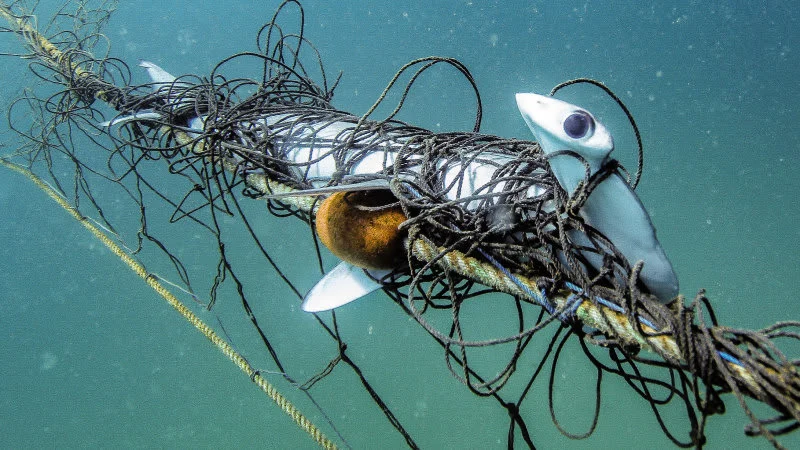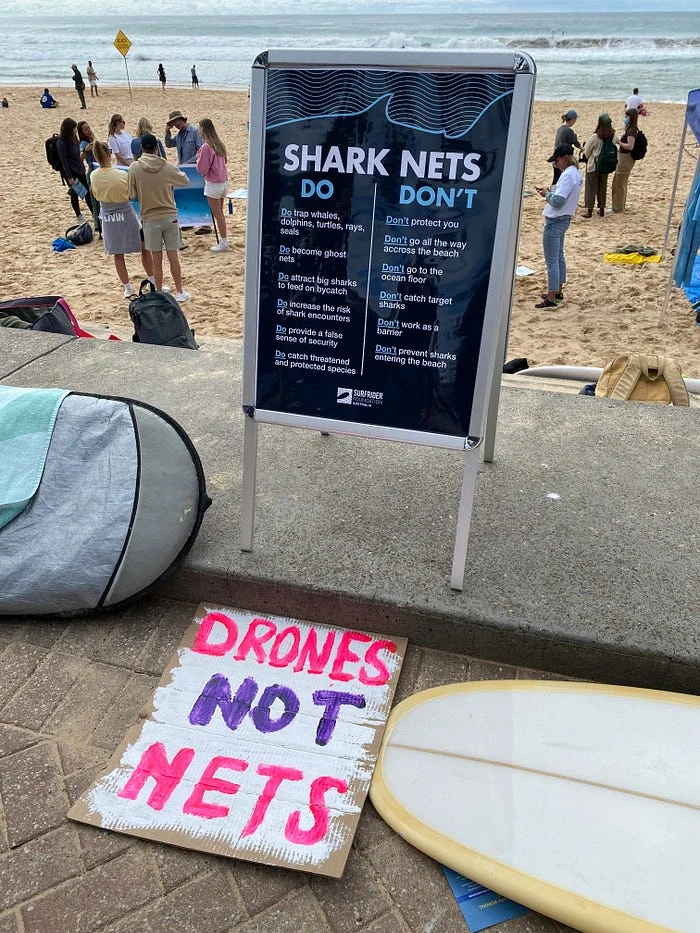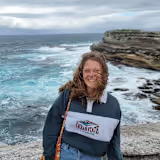Changing the Conversation about Shark Nets

At the end of July each year, the NSW Government releases it's report on it's Shark Meshing Program. Last year a total of 228 marine animals were caught in the gillnets dotted up our coastline. Only 24 of which were "target species of sharks".
A group of Western Sydney film students were tasked with creating a documentary about the environment. They chose to highlight the dangers of these gillnets and educate the public on this issue that we all take for granted.
As a passionate shark lover and ocean enthusiast, I decided to interview them and the result was this article. A passion project if you will. You can watch Submerged here!
The Cost for a peace of mind: How this short film is changing the conversation about shark nets
13/08/2023
Over oat mochas and banana bread, I sit down with Western Sydney University students, Ella Southwell and Siobhan Cowles to chat about their new short film, Submerged: The Hidden Truth About Shark Nets.
By Erin Norton
“It was good because we all fit into one car! We went to the beach so many times- we loved making this film” laughed Ella Southwell, director of Submerged: The Hidden Truth About Shark Nets. A small and passionate team of 5, Ella and her team have spent months planning and shooting this film for a university assignment. But it feels so much bigger than that- it’s raising awareness about one of the most destructive and controversial environmental issues happening in Australian waters today.
Many late nights in the editing room, interviewing the best in shark conservation, obscene amounts of coffee and a freezing 5am trip to Bondi have paid off. Submerged is a 15-minute lesson about the history, environmental impact and future of shark nets in our oceans.
Director, Ella said the idea came when she stumbled upon a video from the popular Instagram account, DroneSharkApp.
“The idea came to me after I saw a video about how a dolphin died in the nets off Bronte Beach.” She explained,
“And then I started asking questions. Why is this dolphin dead? I dug into the research and found it was because of the shark nets. I had no idea”.
To understand why these nets are in our waters in the first place, we must travel back in time to the 1930’s. The Shark Meshing Program (SMP) was first introduced in New South Wales (NSW) in 1937, following a series of shark bite fatalities. Tensions were high and locals believed that Sydney Harbour was “shark infested”. Now, with the gift of hindsight and Taronga Zoo’s Shark Attack File, we know the reason behind the increased activity was due to the dumping of offal by local slaughterhouses in the Harbour and neighbouring Glebe Island. More blood and chum in the water, led to more sharks being present which in turn led to more people coming into contact with them. This of course, wasn’t fully understood and the course of action the government deemed most necessary was to reduce the shark population by starting a cull.
On October 28th 1937, the first cull began in NSW at Bondi Beach, starting the decades long Shark Meshing Program. Today, there are 51 gillnets, stretching all the way from Newcastle to Wollongong. These nets are not barriers as many are led to believe; they are only 150 metres long, 6 metres high and sit at a depth of 10 metres. Generally, they are located only 500 metres from the shoreline and a shark can easily swim around or underneath one.

When speaking to Ella and Siobhan about their film, we spoke at length about the Shark Meshing Program. Ella pointed out that these nets are old technology and are only in the water for 6 months of the year- they get removed during the winter months. We are currently in the middle of our winter here in Australia so the beaches of NSW are net free, allowing migrating Humpbacks to swim up the coastline freely. However, come September the nets will be returned to the water, entangling those same Humpbacks on their way back to Antarctica as well as dozens more marine animals.
“When you really sit down and think about it, someone is taking the time to make new nets, put them out back into the ocean and they aren’t swapping them out for something better.” Ella explained.
“There’s no science to say that they are effective because even the beaches that have them (nets), don’t get attacks. So, it’s like that’s the genuine point”.
This frustration is shared by many in the ocean conservation space. Siobhan and Ella hope that their documentary will help educate people on how to be safe whilst swimming and about the less violent, safer alternatives to shark mitigation tactics such as drones.
“This pisses a lot of people off and that was really helpful in making this documentary because people genuinely wanted to educate and spread the word that these shark nets are harmful” Siobhan said.
With shark nets set to return to our beaches on September 1st, time is of the essence. The release of the Department of Primary Industries annual Shark Meshing report has left a bad taste in coastal communities’ mouths and people are seeing the full extent of the environmental damage that the gillnets are having.
Ella, Siobhan and the interviewees in Submerged encourage people to spread the word, write to local MP’s and use social media to support organisations fighting for the removal of the nets. There is hope that one day, our beautiful beaches will be safer for sharks and swimmers alike.
Like this project
Posted Jan 5, 2024
A passion project article about a short film about shark nets in NSW, Australia.
Likes
0
Views
11


